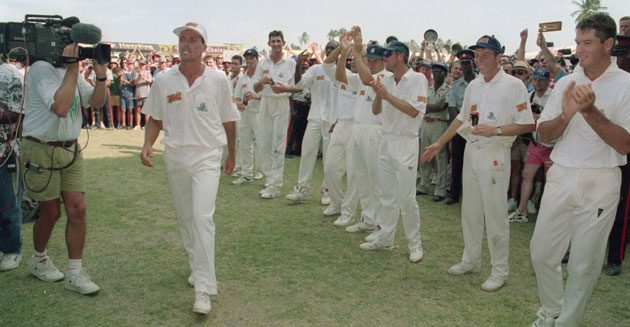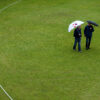Having launched their Caribbean campaign in Antigua last week, England move on to Barbados.
Richard Spiller looks back at the involvement of Surrey players in Tests at the Kensington Oval.
—
1929-30: Sandham hits maiden ton
England’s first Test tour of the Caribbean was launched in Bridgetown, having sent a party to West Indies at the same time as they were staging a tour to New Zealand.
It was a trip which proved thoroughly agreeable to Andy Sandham, who spent much of his career in the shadow of his illustrious county colleague Jack Hobbs. Restricted to 14 Tests, he scored two centuries and the first came at the Kensington Oval, his 152 at the top of the order ensuring England went past West Indies’ 369 by making 467 in a match which ran out into a draw. Sandham, at 39, was a relative novice compared with his opening partner George Gunn (50) and left-arm spinnewr Wilfred Rhodes (52), going on to make 325 at Sabina Park later in the series.
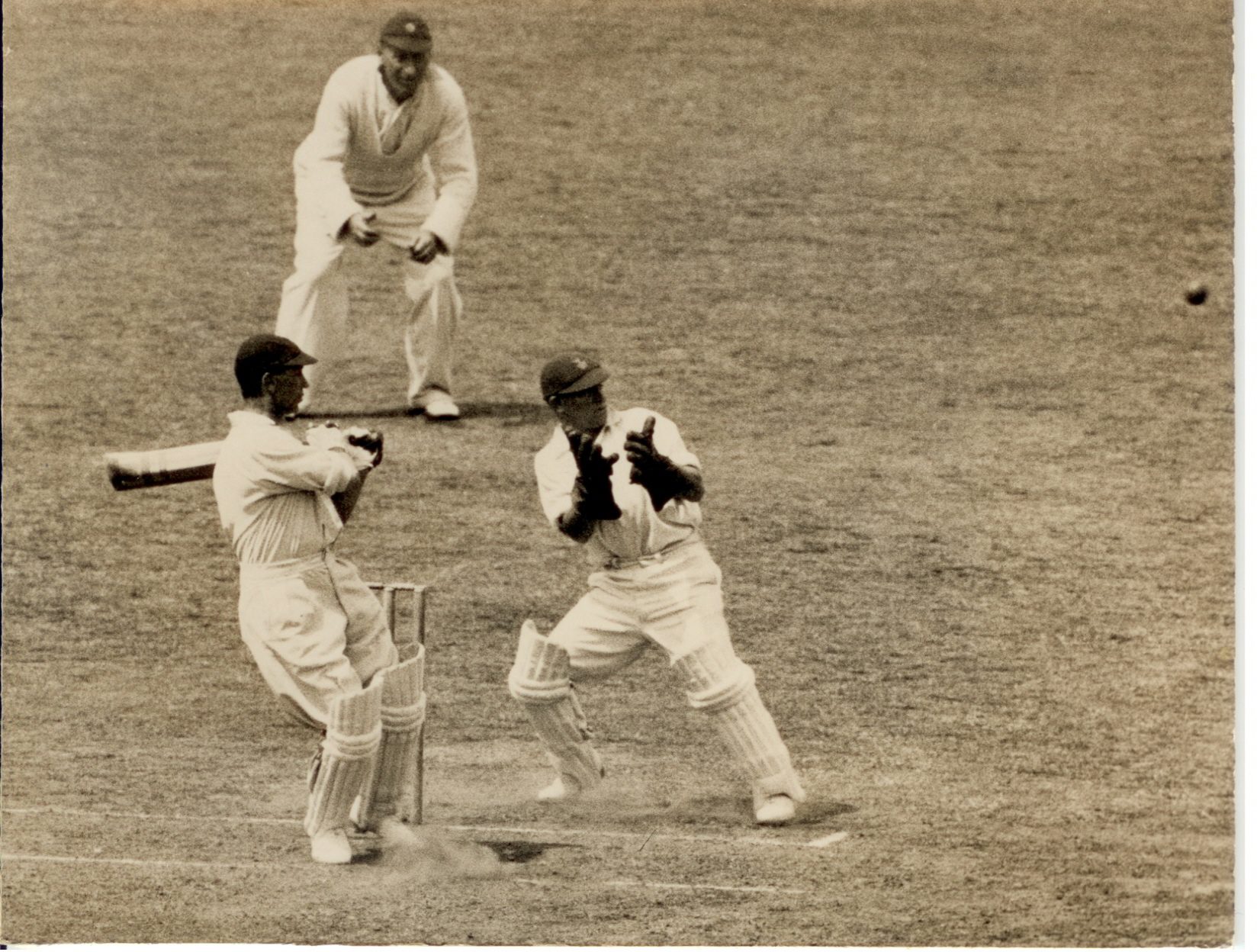
1934-35: Errol Holmes makes his Test debut
When England returned five years later, it was a very different pitch which greeted them, rain and then the fierce sun and a strong drying wind making batting hazardous.
That was bad luck for Surrey’s Errol Holmes on his Test debut. West Indies had been bowled out for 102 and the visitors found it just as hard with only Wally Hammond’s 44no keeping them afloat. Holmes, in the first of only five Tests, was dismissed for a duck by Leslie Hylton – who was to be executed 20 years later for the murder of his wife, the only Test players known to suffer that fate – and Bob Wyatt declared immediately at 81-7. His gamble to make use of the conditions paid off, opposite number Jackie Grant doing likewise at 51-6 to set England 73 to win on the third day. They clambered home by four wickets and Holmes only made six this time.
1947-48: Laker’s glorious Test start
A much happier debut belonged to Jim Laker, when England returned to the Caribbean for the first time after the Second World War, in 1947-48. Still adjusting to the return of peace after six years of the Second World War, both teams fielded four debutants and much of Laker’s experience had come in the 1947 season. On the way to becoming the greatest purveyor of his art, the off-spinner bowled Clyde Walcott for his first victim and went on to claim 7-103 in 37 overs in dismissing West Indies for 296. Led by Ken Cranston, England fell 43 behind, Laker adding two more wickets in the second innings with his side batting out to 86-4 after being set 395.
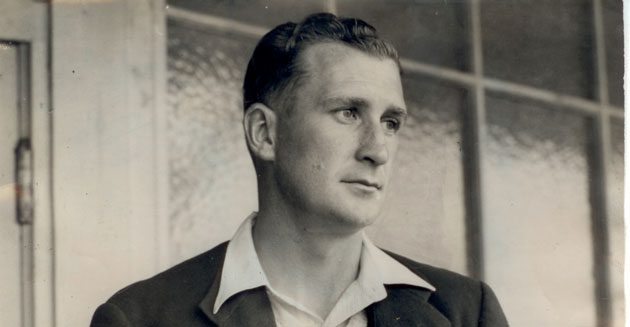
1953-54: Three Surrey players involved in heavy defeat
Jim Laker was back six years later, this time in company with county colleagues Tony Lock and Peter May, and found Clyde Walcott revelling in home conditions this time. One of the “Three Ws’, alongside Frank Worrell and Everton Weekes, Walcott’s 220 formed the bulk of his side’s 383 all out but Laker’s 4-81 from 30.1 overs included having the double-centurion stumped by Godfrey Evans. Left-arm spinner Lock found the going tougher, following 1-116 in the first innings with 0-100 in the second, Laker also finishing wicketless. Needing 495, England were bowled out for 313 – although at least May made up for failing earlier by making 62 – to go 2-0 down in a series they eventually squared.
1959-60: Barrington shows his mettle
When England toured the Caribbean in 1959-60, they were still rebuilding from the previous winter’s Ashes trouncing – does it sound familiar? – and Ken Barrington was one of the players chosen to lead them towards better times.
His maiden Test century came in the opening Test, described by Wisden as “an exercise in patience and stamina for batsmen”, which was an area where Barrington proved supreme. He made 128 out of 482, Ted Dexter also cracking a century, and although skipper Peter May was out for a single, the third Surrey player on parade – wicketkeeper Roy Swetman – chipped in with 45.
Only 18 wickets fell in the match, though, in a series which was to finish 0-0.
1967-68: Edrich shines for Cowdrey’s men
Ken Barrington was back eight years later but two other Surrey players grabbed the attention. The first was 22-year-old Pat Pocock, who made an unexpected debut after England’s first-choice off-spinner Fred Titmus had lost four toes when his foot was caught in the propeller of a motor boat while snorkelling. Pocock’s maiden Test wicket came when he took a return catch from Clive Lloyd, which would otherwise have knocked his head off, in the home side’s 349 all out.
Then John Edrich commanded the stage by making a superb 146, setting up the reply in an opening stand of 172 with Geoffrey Boycott (90) as England took a lead of 50, Barrington making 17 in a match which ended as a draw and England going on to win the series 1-0.
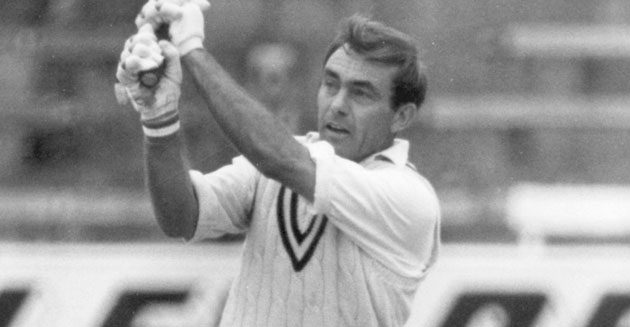
1973-74: Pocock and Arnold playing
Kensington Oval’s ability to break the hearts of bowlers was well founded, as Surrey pair Pat Pocock and Geoff Arnold found in March 1974. Mike Denness’s England side were desperately attempting to stay afloat
Tony Greig’s century, aided by Alan Knott (87) led England to 395 but that was dwarfed by West Indies amassing a gigantic 596-8dec, Rohan Kanhai’s side containing nine players who scored a first-class century. At its apex was Lawrence Rowe, whose 302 over more than 10 hours was the 11th triple century scored at Test level, Wisden paying tribute to his “languid ferocity”. Seamer Arnold’s 1-91 from 26 overs and Pocock’s 28 overs for 93 at least contained the hosts, although it was Greig’s 6-164 which stole the honours again. Keith Fletcher (129) and Knott (67) secured a draw in a series which tenacious England somehow came back to draw 1-1.
1980-81: Jackman’s joy turns to grief
Politics, controversy and tragedy all moulded into one at the Barbados Test in 1981. First there was doubt it would be played, England having been thrashed in Port of Spain and then banished from Guyana when Robin Jackman was expelled because of his long links with South Africa.
Surrey’s veteran seamer had originally been ignored for the tour, despite taking 121 first-class wickets the previous summer, only to be called up as a replacement for his injured former county colleague Bob Willis. After departing Guyana, England flew to Barbados while politicians decided if the tour could proceed and finally gave it the go-ahead.
Jackman’s debut at 35 saw him remove both Gordon Greenidge and Desmond Haynes in the course of claiming 3-65, returning to add centurion Clive Lloyd as West Indies were dismissed for 265 early on the second day. That proved to be a much better total when England were rushed out for 122 on the way to a massive 298-run defeat. All that was cast into the shadows, though, when England’s assistant manager and much-loved mentor Ken Barrington – Jackman’s old team-mate at The Oval and one of his country’s finest batsmen of the 20th century – died of a heart attack on the second night of the match.
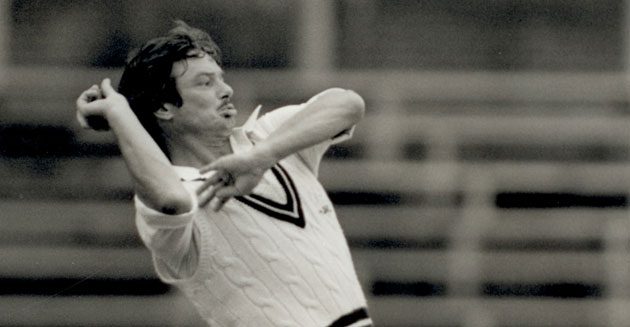
1989-90: Stewart opens for first time
There were no Surrey players involved in the 1985-86 Test – England being hammered by an innings and 30 runs on the way to a 5-0 thrashing – but four years later Graham Gooch led an experimental side which was tipped to suffer the same fate. As it was, they pulled off a shock victory in the opening Test at Jamaica and might well have won but for a go-slow by the hosts in Trinidad. By the time the teams arrived at Kensington Oval, England were without Gooch and key bowler Angus Fraser through injury but hung on gamely into the final hour before Curtly Ambrose’s 8-45 finished them off. Alec Stewart was pushed up the order to replace Gooch, fighting knocks of 45 and 37 suggesting he could become accustomed to the role.
1993-94: Stewart’s glory match
Sport’s ability to defy expectation and even belief was stretched by England’s 298-run victory. They arrived having lost the first three Tests, the most galling being a week earlier at Trinidad where they were routed for 46. Sent in this time by Richie Richardson, the tourists saw Stewart and skipper Mike Atherton put on 171 for the first wicket, Surrey’s captain going on to score 131 on his 31st birthday in a final total of 355. West Indies’ tail wagged strongly enough to reduce the deficit to 41, despite Angus Fraser’s 8-75, and Stewart had much to do in the second innings when England slipped to 43-2. Relishing his return to the top of the order in the Caribbean, after a year keeping wicket, he batted eight hours for a splendid 143 and his record fifth wicket partnership of 150 with county colleague Graham Thorpe (84) ensured the hosts would chase 446. When they failed, ending a run of 12 successive wins on the ground, it was England’s first Test win in Barbados for almost six decades, ensuring a 3-1 series defeat did not hurt quite so much.
1998: Thorpe relishes Ramprakash partnership
England arrived in 1998 trailing 2-1 and eyeing a series-levelling victory only to find themselves 53-4 with Alec Stewart and Mark Butcher among the casualties. It was Surrey team-mate Graham Thorpe who initiated the recovery, his 103 joining with Mark Ramprakash – a future county colleague – in a majestic partnership worth 208 only interrupted by Thorpe needing treatment for back trouble. Both scored their first centuries against West Indies and Ramprakash’s magnificent 154 was the fruition of a talent which had proved enigmatic over his previous 37 innings. England’s 403 was followed by them dismissing the hosts for 262 before Stewart (48), Butcher (26) and Thorpe (36no) extended the second innings to 233-3dec. Set 375, West Indies were 112-2 only for the fifth day to be washed out in a series they won 3-1.
2003-04: Thorpe’s on song again
All Graham Thorpe’s fighting qualities were in evidence when he scored a second century at the Kensington Oval in April 2004, proving instrumental to England’s eight-wicket triumph. Having dismissed West Indies for 224, Michael Vaughan’s side were in dire trouble at 33-3, the nuggety left-hander’s fighting 119 all out keeping them in the game and eked out a tiny lead of two. When Matthew Hoggard’s hat-trick helped to destroy West Indies for a second time, limping to 94 all out, England cruised to victory with Mark Butcher, having failed earlier on, hitting the winning runs as they won three out of four Tests.
2014-15: Jordan’s homecoming
Having rediscovered its shirt-front qualities in the previous series, Barbados proved a happier hunting round again for bowlers when England returned in 2015. Among the side was Chris Jordan, Surrey’s new T20 captain for the 2022 season, returning to the island of his birth although he had an uneventful match and has not appeared in Tests since. Alastair Cook’s 105 saw England make 257 but although the enjoyed a lead of 70, the tourists collapsed for 123 in the second innings and went down by five wickets to draw the series 1-1. Jordan had the compensation of a wicket in the second innings.
2018-19: England roasted by Roach
Kemar Roach clearly feels at home at an Oval – whether it’s Kensington or Kennington, where he is scheduled to return next month.
In his native Barbados, the speedster has a fine record which was boosted by his 5-17 in 2019, which sent England spiralling to 77 all out as they replied to 289. Roach set the tone by bowling Surrey captain Rory Burns – appearing alongside Sam Curran – and that massive lead was built upon by Jason Holder’s extraordinary 202no. Needing an impossible 628 over more than two days, England at least put up a better show with Burns making 84, Curran the last man out for 17 as the match was lost by 381 runs.
